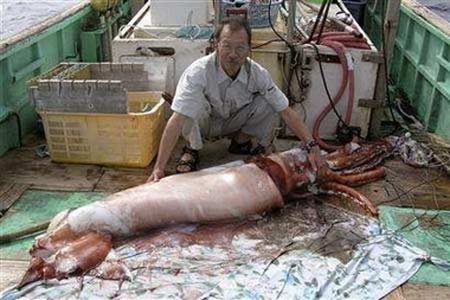Scientists catch live giant squid
(Reuters)Updated: 2006-12-23 15:43
Tokyo - Its mass of reddish tentacles flailing, a giant squid fought a losing battle to evade capture in a video unveiled by Japanese scientists on Friday.
Images of the squid -- a relatively small female about 3.5 metres (11 ft 6 in) long and weighing 50 kg (110 lb) -- were the ultimate prize for zoologists at the National Science Museum, who have been pursuing one of the ocean's most mysterious creatures for years.
"Nobody has ever seen a live giant squid except fishermen," team leader Tsunemi Kubodera of the museum's zoology department said in an interview on Friday. "We believe these are the first ever moving pictures of a giant squid."
Little was known until recently about the creature thought to have inspired the myth of the "kraken", a tentacled monster that was blamed by sailors for sinking ships off Norway in the 18th century.
Unconfirmed reports say giant squid can grow up to 20 metres long, but according to scientists they are unlikely to pose a threat to ships because they spend their lives hundreds of metres under the sea.
The Japanese research team tracked giant squid by following their biggest predators -- sperm whales -- as they gathered to feed near the Ogasawara islands, 1,000 km (620 miles) south of Tokyo between September and December.
They succeeded in taking the first still photographs of a living giant squid in 2005, observing that it moved around in the water more actively than previously thought, and captured food by entangling prey in its powerful tentacles.
The latest specimen, whose formalin-preserved carcass was displayed at a news conference at the museum in Tokyo, was caught on a baited hook laid 650 metres (2,150 ft) under the sea off the Ogasawara islands, on December 4, the scientists said.
A squid about 55 cm (21.65 inches) in length had been attracted by the bait and the giant squid was hooked when it tried to eat the smaller squid, the scientists said.
|
||
|
||
|
|

